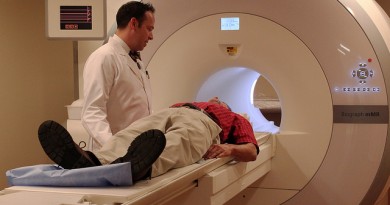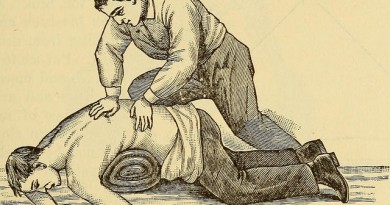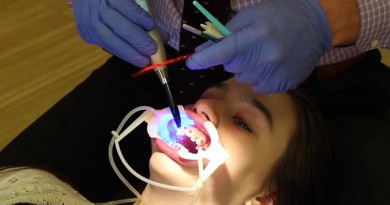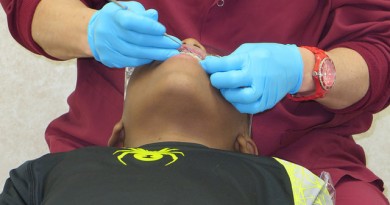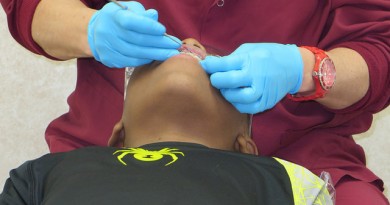How Much Do New Glasses Cost?
Many people take their vision for granted. If you are nearsighted or farsighted, however, you know how important it is to have glasses that fit correctly and help you see despite blurry vision. You can receive an eye exam through many different services including multi-disciplinary medical clinics, independent eye doctors, group eye care practices, or optical retailers that offer eye exams by affiliated optometrists. You can even go to local stores like Target, Costco, and Wal-mart to receive an eye exam. Once the optometrist or ophthalmologist tests your eyes, you can be fitted for contact lenses or choose eyeglasses to help you see clearly. But how much do new glasses cost?
How Much Do Prescription Glasses Cost?
The cost of prescription glasses varies depending on several factors. First, if you have insurance, you may pay around $10 to $50. If you do not have insurance, prices may run from $200 to $300. These prices depend on the prescription, which special correction lenses are needed (such as bifocal or trifocal), and the frames you choose. The lenses price depends on whether they are glass or plastic and the prescription. Glass lenses will cost more but are more effective, and you can even get prescription glasses that are clear in regular light but dark in sunlight to protect your eyes. Where you decide to buy your glasses can also affect the price, as there are many discount chains across the country and online that offer cheap glasses. In order to find out if they are reputable, do some research online to learn more about their customer service before you order from these locations. The money you save may not be worth the trouble if they are not known for good business practices.
How Much Do Bifocal Glasses Cost?
Many people find that they need bifocal lenses when they reach their forties, because they are having problems reading fine print. Although progressive lenses are now available that do not have the lines that indicate bifocal or trifocal lenses, you can also find bifocals that look like regular glasses. Bifocals will cost more because they take more time and skill to produce. With some research, you can find stores and retailers that offer bifocals at discounted rates, often beginning at $30 in addition to the cost of the eye exam and price of the glasses.
How Much Do Transition Glasses Cost?
If you like the idea of wearing the same prescription glasses in regular light and sunlight, you may want to look at transition glasses. These lenses are specially treated to react to ultraviolet rays; the higher the amount of UV rays, the darker the lenses will turn. This protects the eyes from these rays. These can be very convenient as you will only need one pair of glasses no matter what the lighting conditions. Your eyes will not strain as much because the glasses have degrees of protection no matter what the light level. The transition glasses will also save you money, as you will not need to buy additional pairs of prescription sunglasses. Transition glasses cost from $25 to $100 as an add-on to your glasses, depending on where you live and your prescription. They include scratch coating and a UV screen with a one year warranty against scratching from the manufacturer. There are several companies that sell less expensive versions, as well. Check with your insurance company to find out if they cover the cost of glasses with transition finishes.
What Do Superfocus Glasses Cost?
Superfocus glasses allow you to adjust the correction you need for any distance and light condition. This option allows you to see at any distance perfectly with just a quick correction to a slide on the bridge of the frames. These glasses can be used whether the user is nearsighted, farsighted, has astigmatism, or experiences prismatic imbalance. Superfocus glasses cost more than standard glasses, but you will be able to use them for the rest of your life. No matter how your eyes change, you will simply be able to slide the lever to adjust to any situation. Prescriptions start below $700, and include your custom manufactured lenses, fitting by an optician, UVA and UVB protection, scratch resistant coating, storage case, cleaning cloth, optional glare reduction or contrast enhancing finishes, and a one year warranty. The company manufactures a set of glasses custom made for each eye, even if you have two separate prescriptions. Talk to your insurance company to find out if they cover the cost of glasses with the Superfocus option.
Conclusion
The cost of glasses will always depend on where you shop, the prescription of your lenses, your optician’s or ophthalmologist’s rates, and the frames you choose. Some consumers prefer to get the prescription from an optician and shop at a discount frame store to have a prescription filled and save money over the more expensive optician prices. If you have been having problems seeing objects close to you, far away, or reading fine print, you may want to speak to an eye doctor to find the best solution for glasses that will meet all your seeing needs. If you are not sure whether glasses are covered by your insurance plan, contact their customer service department to find out before ordering your glasses. If your plan does not carry a vision insurance policy, you may be required to pay for your eye exams and prescription glasses on your own. Each plan is different, but you may have the ability to add vision insurance to your policy for a few extra dollars each month. If vision problems run in your family or if any members already wear glasses, the extra money will be worth it if you can save hundreds of dollars on your exam and prescription. By taking care of your eyes now, you can keep them from worsening as time goes on with the proper set of glasses.
- 660SHARES

